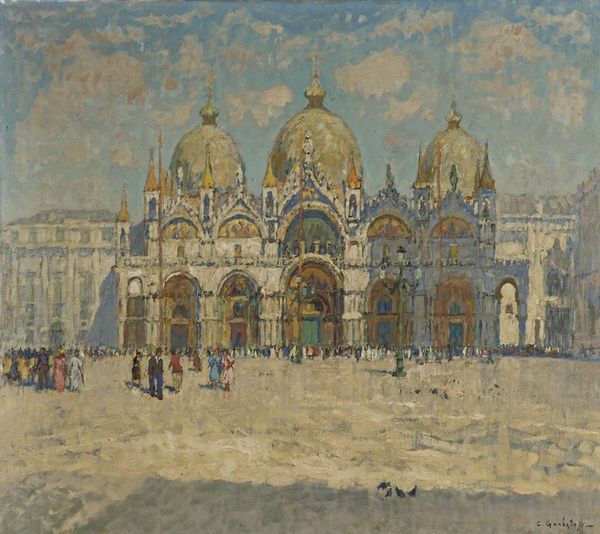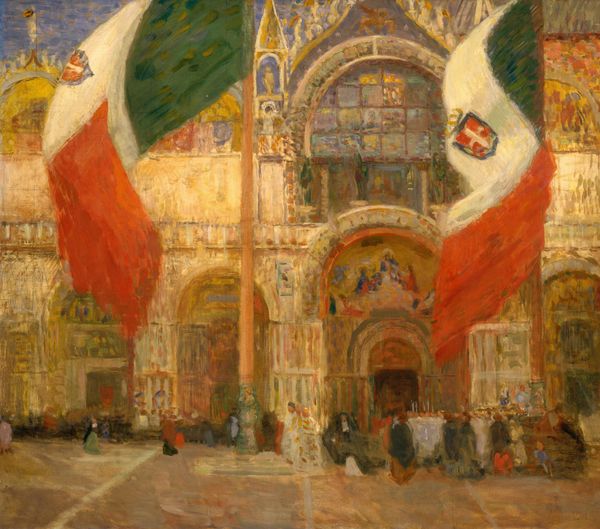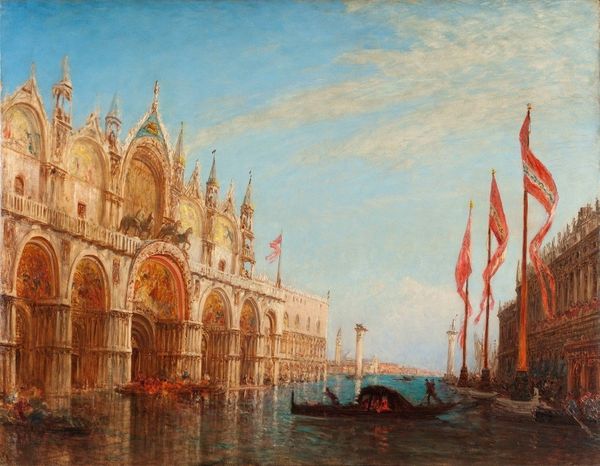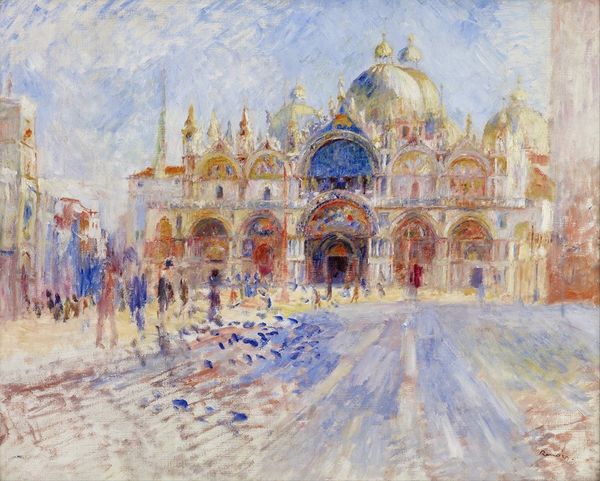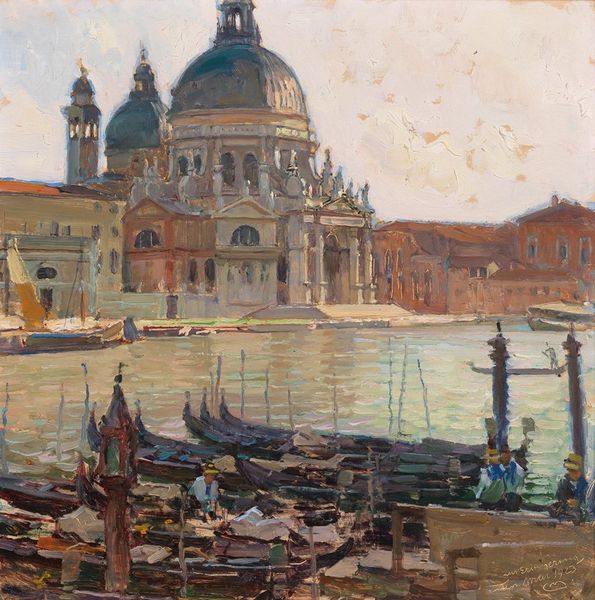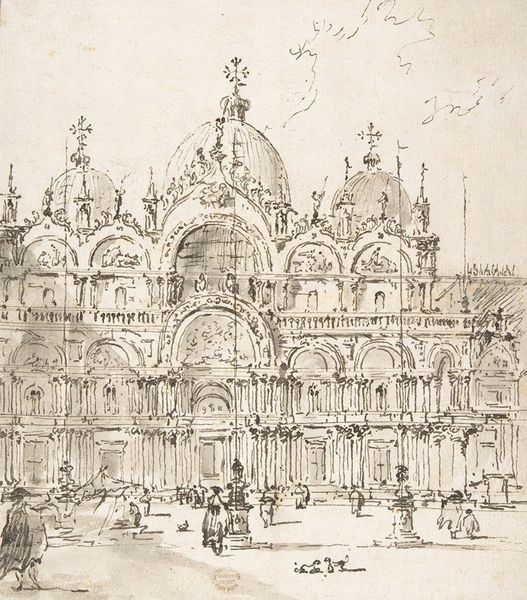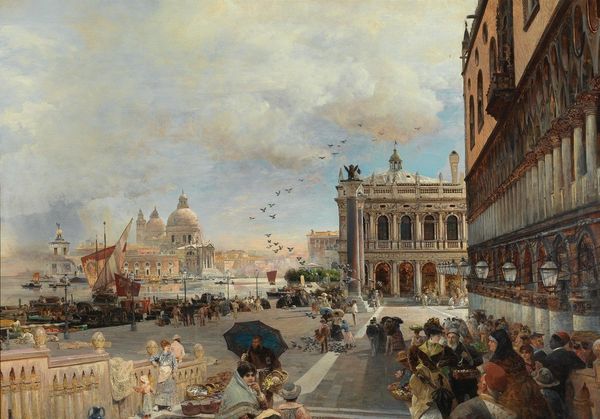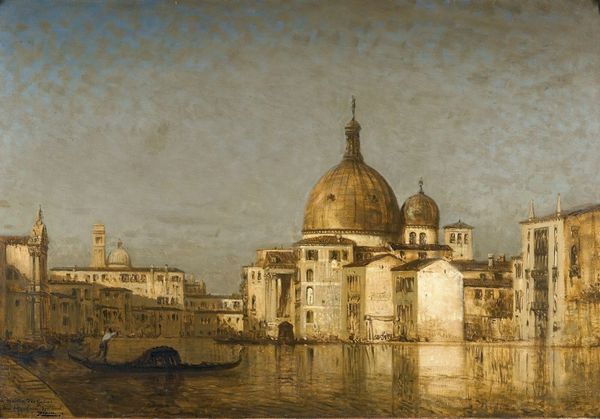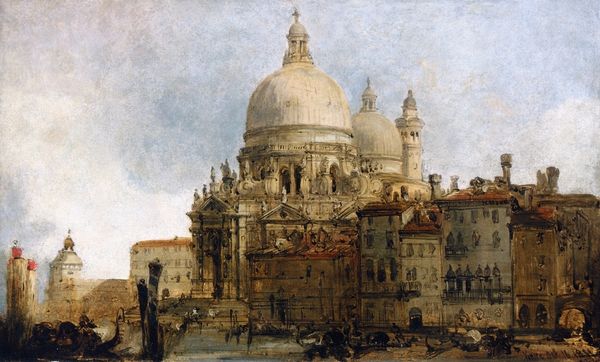
Dimensions: support: 908 x 1200 mm frame: 1223 x 1513 x 70 mm
Copyright: CC-BY-NC-ND 4.0 DEED, Photo: Tate
Curator: The Tate collection presents us with Walter Richard Sickert's rendition of "St Mark’s, Venice (Pax Tibi Marce Evangelista Meus)." Editor: It's quite somber, isn't it? The muted palette and almost dissolving forms lend a melancholic air to such a grand structure. Curator: Indeed. Sickert often used a limited tonal range to explore the interplay of light and shadow. Notice how the architectural details are suggested rather than precisely defined. Editor: And the flags... rather than symbols of national pride, they seem to droop, adding to the overall feeling of decline, perhaps even anticipating the fall of empires. Curator: One could argue that Sickert uses St. Mark's as a study in form and surface, less concerned with its historical weight and more with its plastic qualities. The texture of the paint itself becomes a significant element. Editor: Perhaps, but I can’t help but read it as a commentary on Venice itself, a city steeped in history yet constantly battling the elements. Curator: A fascinating duality, wouldn't you agree? Editor: Absolutely. Sickert's vision leaves us with much to ponder.
Comments
tate 8 months ago
⋮
http://www.tate.org.uk/art/artworks/sickert-st-marks-venice-pax-tibi-marce-evangelista-meus-n05914
Join the conversation
Join millions of artists and users on Artera today and experience the ultimate creative platform.
tate 8 months ago
⋮
Sickert first visited Venice in 1895. He painted St Mark's basilica several times under different conditions, possibly inspired by Monet's paintings of Rouen Cathedral, which he had seen in Paris. However, unlike Monet, he was not concerned with fleeting effects of light. Instead, he concentrated on the structure and mosaics, using the light to accentuate the sparkling gold pinnacles and to emphasise the spirituality of the basilica. This is Sickert's largest and most elaborate depiction of the front elevation. The title includes the Latin motto of the city: 'Peace be unto to you, Mark, my Evangelist'. The picture was first exhibited at the New English Art Club in 1897. Gallery label, September 2004
